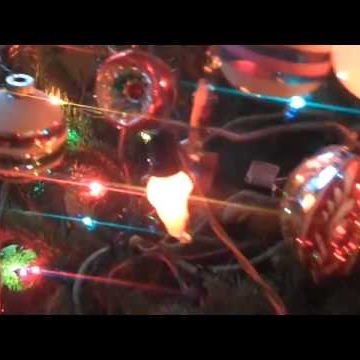Kenneth B Potter
age ~56
from Simpsonville, SC
- Also known as:
-
- Kenneth Burrell Potter
- Ken Potter
- Kenneth L
- Phone and address:
-
120 Mcrae Pl, Simpsonville, SC 29681
(864)2131388
Kenneth Potter Phones & Addresses
- 120 Mcrae Pl, Simpsonville, SC 29681 • (864)2131388
- Newark, DE
- Pearland, TX
- Irving, TX
- Greenville, SC
- San Francisco, CA
- Schenectady, NY
Isbn (Books And Publications)

Natural and Anthropogenic Influences in Fluvial Geomorphology: The Wolman Volume
view sourceAuthor
Kenneth W. Potter
ISBN #
0875900461
License Records
Kenneth Carl Potter
License #:
352013 - Expired
Category:
Contractor
Issued Date:
Jun 2, 2007
Kenneth R Potter
License #:
RS087619A - Expired
Category:
Real Estate Commission
Type:
Real Estate Salesperson-Standard
Name / Title
Company / Classification
Phones & Addresses
Principal
White Tail Express
Business Services
Business Services
7907 Ledgewood Dr, Houston, TX 77049
Us Patents
-
Process For Removing Chromide Coatings From Metal Substrates, And Related Compositions
view source -
US Patent:6953533, Oct 11, 2005
-
Filed:Jun 16, 2003
-
Appl. No.:10/462049
-
Inventors:Lawrence Bernard Kool - Clifton Park NY, US
Kenneth Burrell Potter - Simpsonville SC, US
William Randall Thompson - Greenville SC, US
David Carr - Taylors SC, US
Kiyokazu Watanabe - Yokosuka, JP
Minoru Ishida - Chiba-Ken, JP
Kazuharu Hattori - Tokyo, JP -
Assignee:General Electric Company - Niskayuna NY
-
International Classification:B44C001/22
C03C015/00
C03C025/68
C23F001/00
C25F003/00 -
US Classification:216109, 134 3
-
Abstract:A method for removing a chromide coating from the surface of a substrate is described. The coating is treated with a composition which includes an acid having the formula HAF, where “A” can be Si, Ge, Ti, Zr, Al, or Ga; and x is 1–6. An exemplary acid is hexafluorosilicic acid. The composition may also include a second acid, such as phosphoric acid or nitric acid. In some instances, a third acid is employed, such as hydrochloric acid. A related repair method for replacing a worn or damaged chromide coating is described. The coating is often applied to portions of turbine engine components made from superalloy materials.
-
Method For Chemically Removing Aluminum-Containing Materials From A Substrate
view source -
US Patent:20040169013, Sep 2, 2004
-
Filed:Feb 28, 2003
-
Appl. No.:10/376772
-
Inventors:Lawrence Kool - Clifton Park NY, US
James Ruud - Delmar NY, US
Kenneth Potter - Pearland TX, US
Myron Murth - West Charlton NY, US
Ladd Laird - Spring TX, US
Gabriel Ofori-Okai - Albany NY, US -
Assignee:General Electric Company
-
International Classification:B44C001/22
-
US Classification:216/096000
-
Abstract:A chemical composition for selectively removing an aluminum-containing material from a substrate comprises an acid having a formula of HAF, a precursor thereof, and a mixture of said acid and said precursor; wherein A is selected from the group consisting of Si, Ge, Ti, Zr, Al, and Ga; and x is in a range from 1 to 6, inclusive. The chemical composition can comprise at least another acid selected from the group consisting of phosphoric acid, nitric acid, sulfuric acid, hydrochloric acid, hydrofluoric acid, hydrobromic acid, hydriodic acid, acetic acid, perchloric acid, phosphorous acid, phosphinic acid, alkyl sulfonic acids, mixtures thereof, and precursors thereof. The chemical composition can be used to remove aluminum seal strips selectively from the dovetail of a turbine-engine blade.
-
Method For Chemically Removing Aluminum-Containing Materials From A Substrate
view source -
US Patent:20050161438, Jul 28, 2005
-
Filed:Jan 13, 2005
-
Appl. No.:11/035327
-
Inventors:Lawrence Kool - Clifton Park NY, US
James Ruud - Delmar NY, US
Kenneth Potter - Pearland TX, US
Myron Muth - West Charlton NY, US
Ladd Laird - Spring TX, US
Gabriel Ofori-Okai - Albany NY, US -
International Classification:B44C001/22
-
US Classification:216102000, 252079300
-
Abstract:A chemical composition for selectively removing an aluminum-containing material from a substrate comprises an acid having a formula of HAF, a precursor thereof, and a mixture of said acid and said precursor; wherein A is selected from the group consisting of Si, Ge, Ti, Zr, Al, and Ga; and x is in a range from 1 to 6, inclusive. The chemical composition can comprise at least another acid selected from the group consisting of phosphoric acid, nitric acid, sulfuric acid, hydrochloric acid, hydrofluoric acid, hydrobromic acid, hydriodic acid, acetic acid, perchloric acid, phosphorous acid, phosphinic acid, alkyl sulfonic acids, mixtures thereof, and precursors thereof. The chemical composition can be used to remove aluminum seal strips selectively from the dovetail of a turbine-engine blade.
-
Local Repair Process Of Thermal Barrier Coatings In Turbine Engine Components
view source -
US Patent:20070202269, Aug 30, 2007
-
Filed:Feb 24, 2006
-
Appl. No.:11/361740
-
Inventors:Kenneth Potter - Simpsonville SC, US
John Wang - Westfield IN, US
Mark Bailey - Simpsonville SC, US
David Bucci - Simpsonville SC, US -
International Classification:B05D 3/00
B05D 1/08 -
US Classification:427446000, 427140000
-
Abstract:Processes locally repairing a thermal barrier coating system on a turbine component that has suffered localized spallation includes locally cleaning a spalled region with water to remove spallation from the spalled region and form a tapered profile in the existing thermal barrier coating; and locally thermally spraying a powder mixture into the cleaned localized spalled region to form a repaired thermal barrier coating. Also disclosed herein are repair processes for platforms of bucket turbine engine components.
-
Unidirectional Solidification Process And Apparatus And Single-Crystal Seed Therefor
view source -
US Patent:20120152483, Jun 21, 2012
-
Filed:Dec 16, 2010
-
Appl. No.:12/970104
-
Inventors:Ganjiang Feng - Greenville SC, US
Gregory Keith Bouse - Greer SC, US
Kenneth Burrell Potter - Simpsonville SC, US
Andrew John Elliott - Westminster SC, US
Shan Liu - Central SC, US -
Assignee:GENERAL ELECTRIC COMPANY - Schenectady NY
-
International Classification:B22D 27/04
B22C 23/00 -
US Classification:1641222, 164412, 1643381
-
Abstract:A single-crystal seed, apparatus and process for producing a casting having a single-crystal (SX) microstructure. The seed has a geometry that includes a vertex capable of destabilizing an oxide film that forms at the interface between the seed and a molten metal during the casting process, and thereby promotes a continuous single-crystal grain growth and reduces grain misorientation defects that can initiate from the seed/metal interface.
-
Wear Reduction Kit For Gas Turbine Combustors
view source -
US Patent:57492182, May 12, 1998
-
Filed:Sep 28, 1995
-
Appl. No.:8/535864
-
Inventors:Robert H. Cromer - Johnstown NY
Kenneth B. Potter - Simpsonville SC -
Assignee:General Electric Co. - Schenectady NY
-
International Classification:F02C 720
-
US Classification:60 3931
-
Abstract:A wear reduction kit for a combustion system of a gas turbine includes: a) a plurality of U-shaped inserts for use with a gas turbine transition piece having a peripheral end frame at one end thereof, the peripheral end frame having a continuous peripheral slot therein, open in a radially outward direction wherein the plurality of U-shaped inserts are adapted for insertion within the peripheral slot, and further wherein the U-shaped inserts are formed of material having a hardness greater than the end frame; b) at least a pair of guide block elements for use in securing a transition piece of a gas turbine combustor to a transition piece support, wherein each of the guide block elements is secured to the transition piece and adapted for engagement with cooperating guide finger elements secured to the support; and at least a pair of covers for the guide finger elements, and wherein the guide blocks are formed of material having a hardness greater than the finger element covers; and c) cooperating combustor flow sleeve and combustor liner stop elements wherein the first stop element is adapted to be secured to a combustor flow sleeve and the liner stop element is adapted to be secured to a combustion liner, wherein the first and second stop elements have cooperating engagement surfaces, the engagement surfaces of the flow sleeve stop element having a hardness less than the engagement surfaces of the liner stop element.
-
Rotors And Methods Of Making The Same
view source -
US Patent:20170218780, Aug 3, 2017
-
Filed:Apr 19, 2017
-
Appl. No.:15/491114
-
Inventors:- Schenectady NY, US
Kenneth B. Potter - Simpsonville SC, US -
International Classification:F01D 5/28
F01D 5/06 -
Abstract:A method of joining a first work piece and a second workpiece. The first and second workpieces may be rotor wheels of a rotor for a turbomachine. At least one of the workpieces includes an oxide dispersion strengthened alloy material and the first and second work pieces may be joined by welding a cladding on at least one of the workpieces to the other of the workpieces, without welding a substrate of the at least one workpiece which includes an oxide dispersion strengthened alloy material.
-
Composite Core For Casting Processes, And Processes Of Making And Using The Same
view source -
US Patent:20160175923, Jun 23, 2016
-
Filed:Apr 9, 2012
-
Appl. No.:13/442130
-
Inventors:Shan Liu - Central SC, US
Kenneth Burrell Potter - Simpsonville SC, US
Ganjiang Feng - Greenville SC, US -
Assignee:GENERAL ELECTRIC COMPANY - Schenectady NY
-
International Classification:B22C 9/10
B22D 25/02 -
Abstract:A composite ceramic core that, in combination with a shell mold, is suitable for use in a casting process to produce metal alloy components. The core and casting process make use of a highly leachable interior layer in combination with an exterior layer that is less reactive than the interior layer in the presence of common alloying elements. The interior layer contains at least one hollow channel that allows a point of entry for a leaching solution, as well as exit for gaseous byproducts generated during the casting process.
Resumes

Kenneth Potter
view source
Kenneth Potter
view source
Kenneth Potter
view sourceClassmates

Kenneth Potter
view sourceSchools:
Ohio County Elementary School Rising Sun IN 1947-1956
Community:
Amber Craig, Christian Kline, Nada Huron, Robert Skidmore

Kenneth Potter
view sourceSchools:
Hill City High School Hill City MN 1950-1954
Community:
Becky Christensen, Ann Wallace, Ken Erickson, Gaylord Parker, Alice Kortekaas, Delbert Nyhous

Kenneth Potter
view sourceSchools:
T.A. Dugger Junior High School Elizabethton TN 2000-2002
Community:
Heather Elliott, Joyce Reeves

Kenneth Potter
view sourceSchools:
Mckell High School South Shore KY 1946-1950
Community:
Janice Brown, James Fraley, Richard Masters, David Williams

Kenneth Potter
view sourceSchools:
St. Thomas More High School Lafayette LA 1979-1983
Community:
Robert Cullinen

Kenneth Potter
view sourceSchools:
Oxford High School Oxford MI 1969-1973
Community:
Sherry Creamer, Joyce Reeves

Kenneth Potter
view sourceSchools:
East Alton-Wood River High School Wood River IL 1982-1986
Community:
Vicky Mull, Mark Stevenson, Shelia Nievelt

Kenneth Potter
view sourceSchools:
St. Lukes High School Ho Ho Kus NJ 1961-1965
Community:
Marshall Rosenberg, Rob Dwyer, Tracy Welch, Ricardo Gomez, Chiristian Perro, Theresa Wekarski, Bob Michaels, Zay Campozano, Tracy Broderick
Myspace
Youtube
Flickr

Kenneth Potter
view source
Kenneth Potter Sr.
view source
Kenneth Brian Potter
view source
Kenneth Potter
view source
Kenneth Potter
view source
Kenneth Potter
view source
Kenneth Potter
view source
Kenneth Potter
view sourceGoogleplus

Kenneth Potter
About:
My name is kenny i am 32 from geneseo ny

Kenneth Potter

Kenneth Potter

Kenneth Potter

Kenneth Potter

Kenneth Potter

Kenneth Potter

Kenneth Potter
Work:
Vestas
Bragging Rights:
Have 6 kids
Get Report for Kenneth B Potter from Simpsonville, SC, age ~56











